In Fig., a container is shown to have a movable (without friction) piston on top. The container and the piston are all made of perfectly insulating material allowing no heat transfer between outside and inside the container. The container is divided into two compartments by a rigid partition made of a thermally conducting material that allows slow transfer of heat. the lower compartment of the container is filled with 2 moles of an ideal monoatomic gas at 700 K and the upper compartment is filled with 2 moles of an ideal diatomic gas at 400 K. the heat capacities per mole of an ideal monoatomic gas are Cυ=32RandCP=52R, and those for an ideal diatomic gas are Cυe=52RandCP=72R.
Consider the partition to be rigidly fixed so that it does not move. when equilibrium is achieved, the final temperature of the gases will be
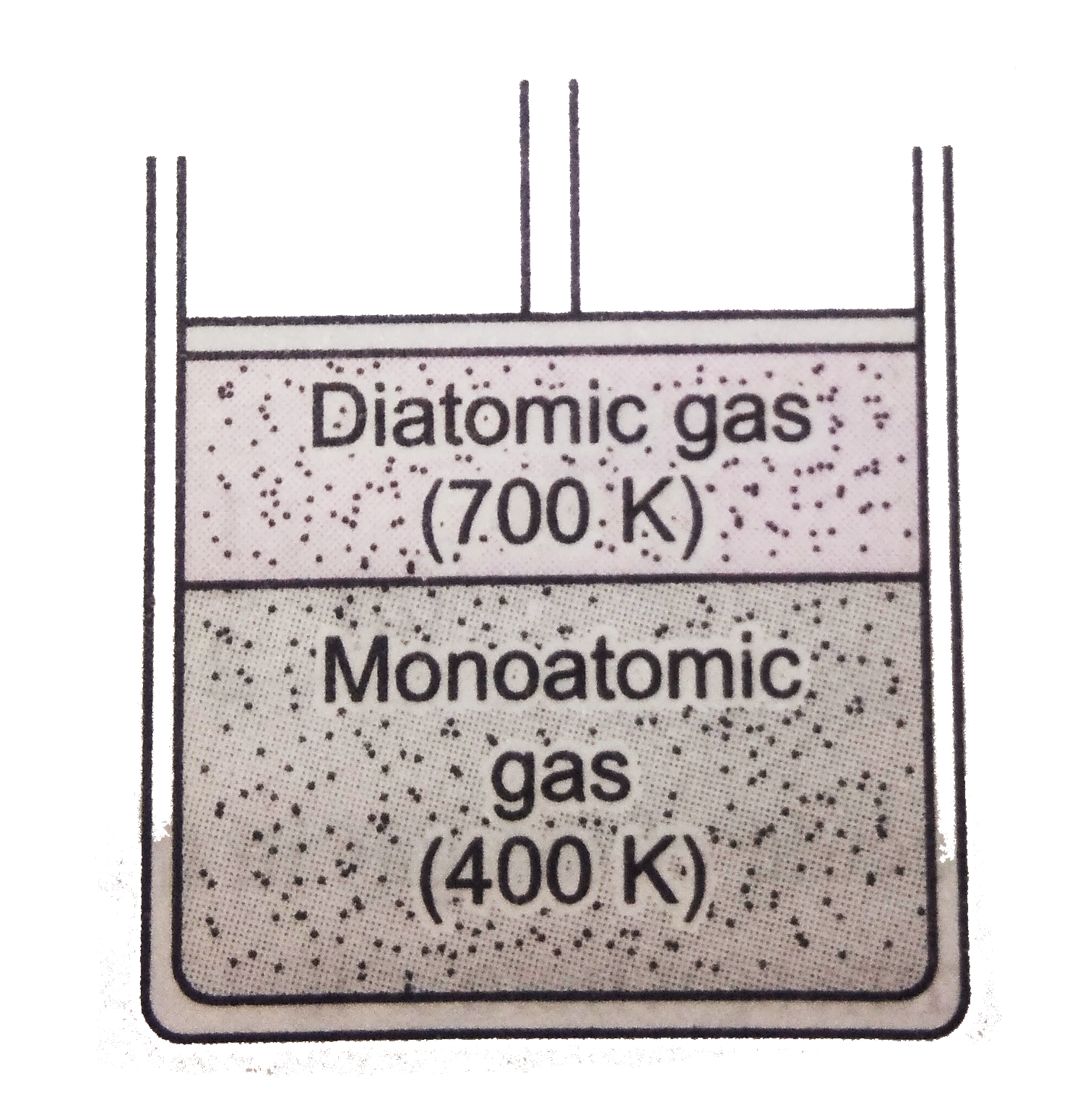
550K
525K
513K
490K
The correct Answer is:D
θA=θB
Process in A is isobaric and Process in B is isochoric
nCP(T−400)=nCV(700−T)
272R(T−400)=2×52R(700−T)
7T−2800=2100−3T
T=490
_E01_436_S01.png)
Topper's Solved these Questions
- GEOMETRICAL OPTICSBOOK - ALLENCHAPTER - GEOMETRICAL OPTICSEXERCISE - EXERCISE- 01
45 Videos
- GEOMETRICAL OPTICSBOOK - ALLENCHAPTER - GEOMETRICAL OPTICSEXERCISE - EXERCISE-2
44 Videos
- GEOMETRICAL OPTICSBOOK - ALLENCHAPTER - GEOMETRICAL OPTICSEXERCISE - EXERCISE - 05 (B) (MATCH THE COLUMN)
3 Videos
- CURRENT ELECTRICITYBOOK - ALLENCHAPTER - CURRENT ELECTRICITYEXERCISE - All Questions
427 Videos
- GRAVITATIONBOOK - ALLENCHAPTER - GRAVITATIONEXERCISE - EXERCISE 4
9 Videos
Similar Questions
A thermodynamic system is taken from an initial state I with internal energy Ui=100J to the final state f along two different paths iaf and ibf, as schematicallly shown in the figure. The work donw by the system along the paths af, ib and bf are Waf=200J,Wib=50J and Wbf=100J respectively.the heat supplied to the system along the path iaf, ib and bf are QiafQ(jb) and Qbf repsectively.If the internal energy of the system in the state b is Ub=200J and Qiaf=500J, the ratio Qbf/Qjbis

In the figure a container is shown to have a movable(without friction) piston on top. The container and the piston are all made of perfectly insualting material allowing no heat transfer between outside and inside the container The container is divided int to two compartments by a rigid partition made of a themally conducting material that allows slow tranfer of heat.The lower compartment of the container is filled with 2 moles of an ideal monatiomic gas at 700K and the upper compartment is filled with 2 moles of an ideal diatomic gas at 400 K.The heat capacitites per mole of na ideal monatomic gas are Cv=32R,Cp=52r, and those for an ideal diatomic gas are Cv=52r,cp=72R.
View SolutionThermal Properties - Heat Transfer - Conduction
View Solution
Knowledge Check
In Fig., a container is shown to have a movable (without friction) piston on top. The container and the piston are all made of perfectly insulating material allowing no heat transfer between outside and inside the container. The container is divided into two compartments by a rigid partition made of a thermally conducting material that allows slow transfer of heat. the lower compartment of the container is filled with 2 moles of an ideal monoatomic gas at 700 K and the upper compartment is filled with 2 moles of an ideal diatomic gas at 400 K. the heat capacities per mole of an ideal monoatomic gas are Cυ=32RandCP=52R, and those for an ideal diatomic gas are Cυe=52RandCP=72R.
Now consider the partition to be free to move without friction so that the pressure of gases in both compartments is the same. the total work done by the gases till the time they achieve equilibrium will be
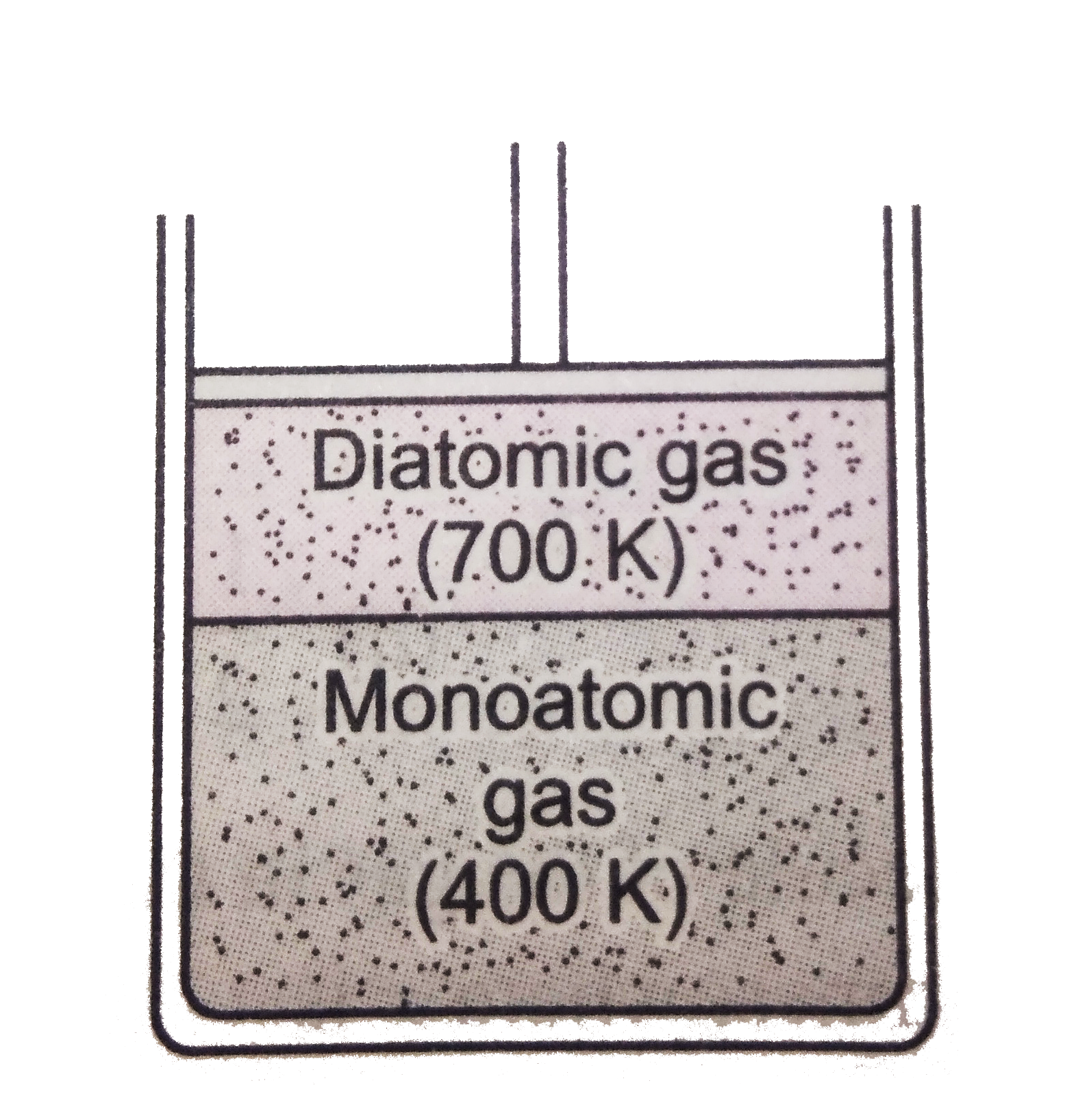 A250 RB200 RC100 RD−100R
A250 RB200 RC100 RD−100RIn the figure, a container is shown to have a movable (without friction) piston on top. The container and the piston are all made of perfectly insulated material allowing no heat transfer between outside and inside the container. The container is divided into two compartments by a rigid partition made of a thermally conducting material that allows slow transfer of heat. The lower compartment of the container is filled with 2 moles of an ideal monatomic gas at 700K and the upper compartment is filled with 2 moles of an ideal diatmoic gas at 400K. The heat capacities per mole of an ideal monatomic gas are CV=32R,CP=52R, and those for an ideal diatomic gas are CV=52R,CP=72R,
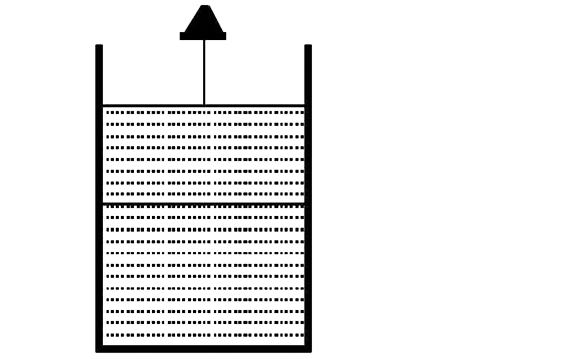
Consider the partition to be rigidly fixed so that it does not move. When equilibrium is achieved, the final temperature of the gasses will beA550KB525KC513KD490KIn the figure, a container is shown to have a movable (without friction) piston on top. The container and the piston are all made of perfectly insulated material allowing no heat transfer between outside and inside the container. The container is divided into two compartments by a rigid partition made of a thermally conducting material that allows slow transfer of heat. The lower compartment of the container is filled with 2 moles of an ideal monatomic gas at 700K and the upper compartment is filled with 2 moles of an ideal diatmoic gas at 400K. The heat capacities per mole of an ideal monatomic gas are CV=32R,CP=52R, and those for an ideal diatomic gas are CV=52R,CP=72R,
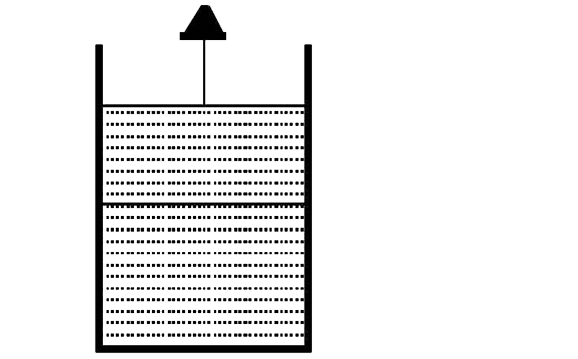
Now consider the partition to be free to move without friction so that the pressure of gasses in both compartments is the same. The total work done by the gases till the time they achives equilibrium will beA−200KB200RC100RD−100R
A partition divides a container having insulated walls into two compartments I and II. The same gas fills the two compartment. What is the ratio of the number of molecules in compartments I and II ?
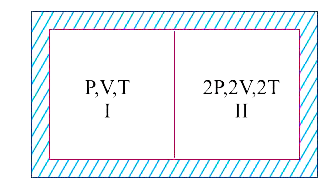
View SolutionMercury is transported in the containers made of-
View SolutionMercury is transported in the containers made of :
View SolutionA box is divided into two equal compartments by a thin partition and they are filled with gases X and Y respectively. The two compartments have a pressure of 250 torr each. The pressure after removing the partition will be equal to:
View SolutionA rigid and insulated tank of 3m3 volume is divided into two compartments. One compartment of volume of 2m3 contains an ideal gas at 0.8314 Mpa and 400 K while the second compartment of volume of 1m3 contains the same gas at 8.314 Mpa and 500 K. If the partition between the two compartments is rptured, the final temperature of the gas is :
View Solution